The Viking Art of Metalworking: How They Found and Made Jewelry
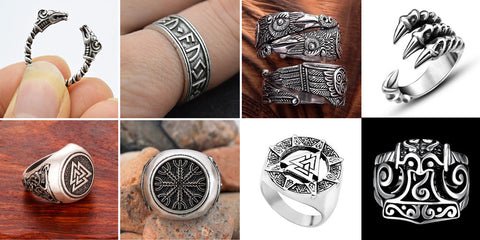
The Vikings were skilled metalworkers who made a variety of items, including weapons, tools, and jewelry. Their jewelry was highly prized and often worn as a symbol of status and…
Viking History: Life on a Viking Age Farm: A Glimpse into Everyday Life.

5 minutes reading time Farming and everything that pertains to food and clothing took and were essential tasks up a lot of a viking’s time. Nevertheless, let’s say an individual…
Viking funeral – Norse pagan belief and traditions
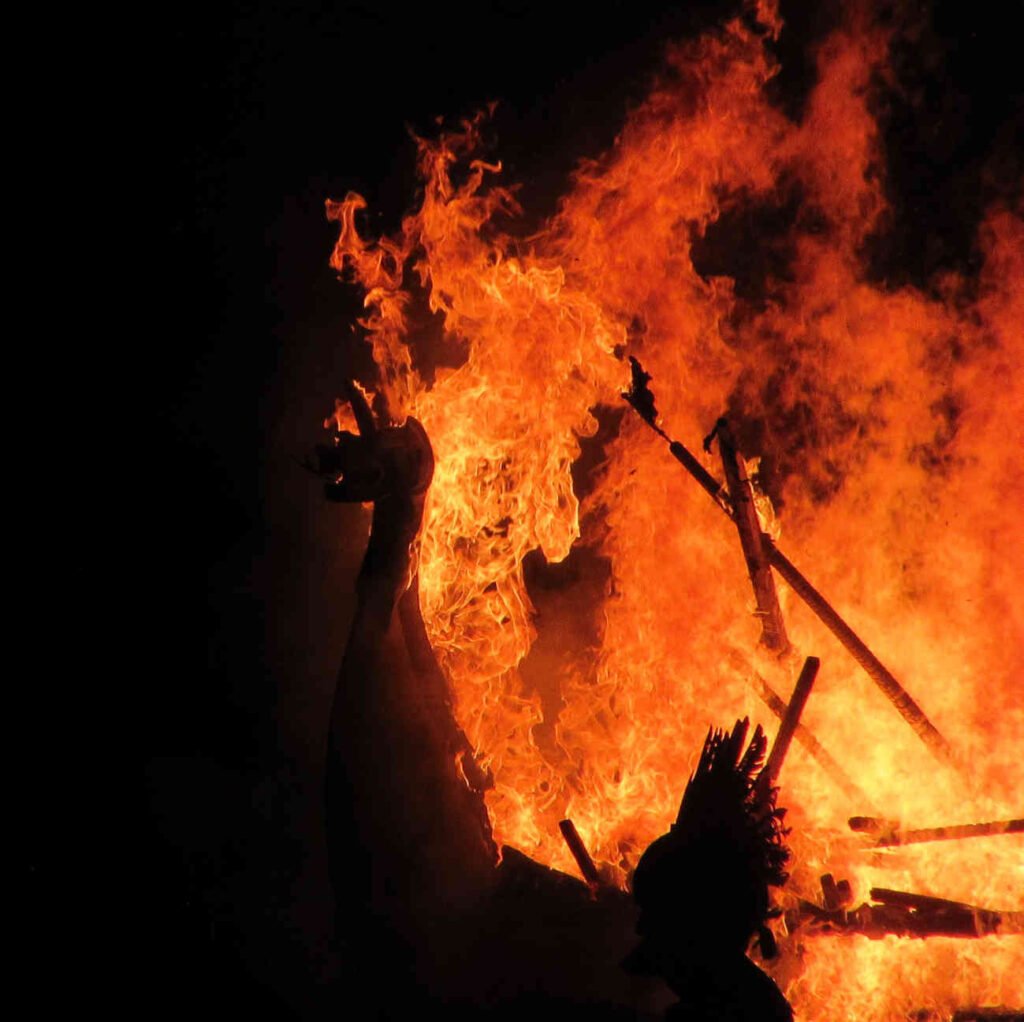
4 minute read Some of the norse pagan and viking traditions are often misunderstood or wrongly portrayed. One of them is the Viking funeral. Hollywood usually makes a scene when the…
Valhalla – The hall of the slain
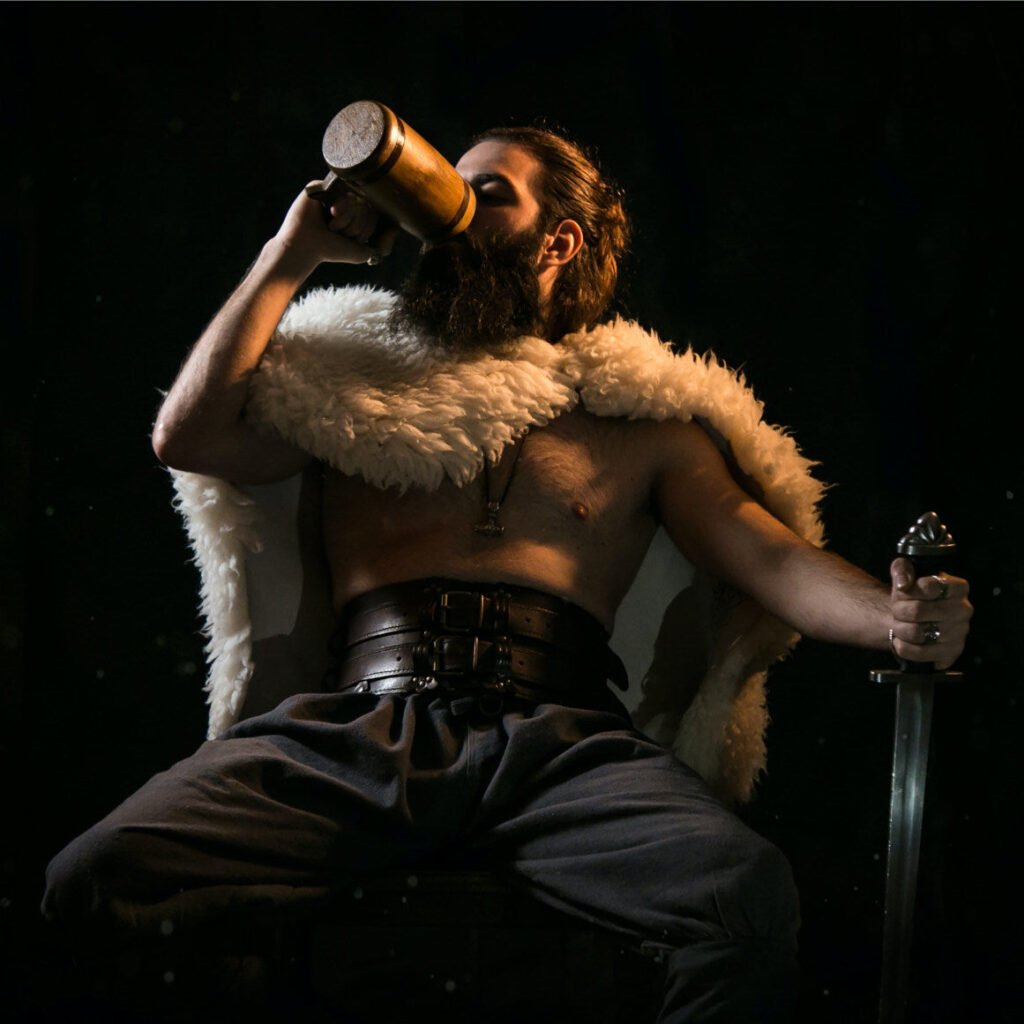
3 min read Valhalla (Old Norse: Valhǫll) translates to “hall of the slain” and is often described as Odin’s hall, a place for the fallen warriors. A majestic hall with shields…
Ancient Viking Sword Revelation

More than 2,000 swords have been found so far from the viking age (around 800 AD – 1050 AD). However, unlike most of the swords that were made for battle, recent discoveries through the use of neutron scans have proven that some of these swords may have been purely created for decorative purposes.
All three of these swords (found in Denmark and pictured above) were made through pattern welding which includes using thin strips of various metals, irons and steel. They are then welded together, folded and/or twisted and then forged in various ways to produce decorative patterns.
Whereas swords made for battle were typically made of pure steel.
Learn more at: http://www.livescience.com/58654-viking-sword-scans-reveal-norse-culture.html
Viking jewelry for sale:


What did Viking Villages look like?

While we usually think of the Vikings as travelers and raiders, they did not in fact live on their longboats or in military camps. The majority would have spent most of their lives in villages, not too dissimilar from the English and French villages that they were raiding and conquering.
While the exact composition and nature of Viking villages depend on the region in which they were located, and they also changed over time, there are a few characteristics that are fundamental to Viking villages. Let’s take a look.

Farmstead, Village, or Fortress
The size of Viking villages varied greatly.
In poorer and harsher areas, farmsteads were isolated and separated by relatively long distances. This is especially common in Iceland, where large farmsteads are spotted across the landscape.
In more prosperous areas, a dozen farmsteads might cluster together to make a small village. The houses of the inhabitants of these small Viking towns were clustered together in the center of the town and enclosed by walls, as much to keep livestock from wandering through as offering protection from enemies. Farm and grazing land then surrounded the village.
Even in the riches areas where the Vikings built their distinctive defensive ring fortresses, there were usually fewer than 20 longhouses – the name that we giving to Viking houses – within the fortress walls.
The largest surviving ring fortress, at Aggersberg in Denmark, only had an internal diameter of 240 meters and archaeological remains of 48 houses survive.
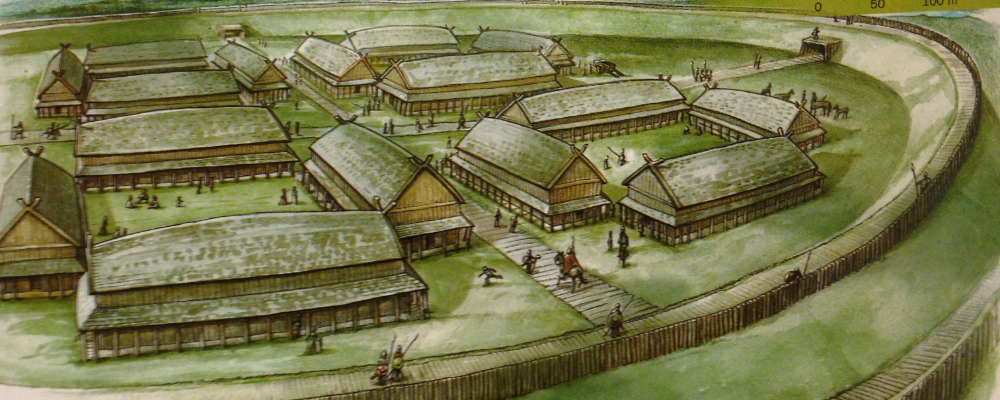
Location, Location, Location
The success and prosperity of a Viking village often depended on its location. Most villages were located near the coast or along a fjord. This was, firstly, because fishing was fundamental to their way of life, and secondly because it made transport easier. It was much easier for the Vikings to travel by boat than try and cross the rugged landscape.
Settlements were also usually placed on high ground to ensure the best possible drainage. While wells were common features of larger villages, farmsteads and smaller villages were almost always located close to a source of fresh running water.
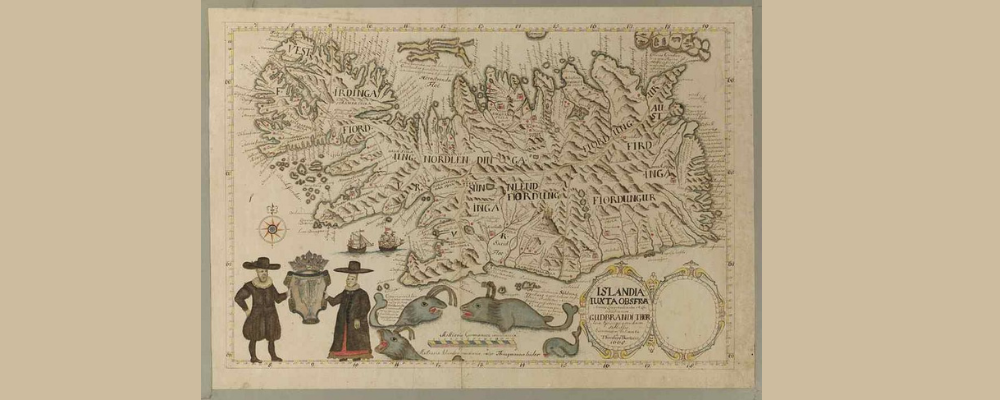
Household
Households varied greatly in size depending on the wealth of the inhabitants. Most dwellings were centered on a longhouse, so-called because of their rectangular shape.
In Norway, these houses were usually built from wood, with turf or thatched roof. Meanwhile, in Scotland, stone houses were more common as wood was relatively scarce. The Vikings were inventive and used whatever materials were available to them locally.
For poorer people, this may have been their only building. The family would have lived here, and they would have been joined inside by their livestock in the colder winter months.
Richer farmsteads also had multiple outbuildings, both for sheltering livestock and creating space for other activities, such as brewing.
The household would have been composed of the owner of the farmstead and his family, which was an extended family of parents and cousins, rather than just the nuclear family.
Paid hands would also have lived and worked on the farmstead, alongside slaves, which were common in the Viking world. Slaves would have been given the less desirable jobs on the farm.

Commodities
To make a living, the Vikings fished, sewed crops, and raised cattle. As we have already said, the importance of fish in the Viking diet is one of the main reasons that settlements were always located near the coast of rivers.
The process of cultivating crops would have been carried out predominantly by women, children, and slaves while the men were off raiding. The most common grains were barley, rye, and oats.
But by far the most important commodity on any Viking farm was its livestock. In fact, cattle were so important that the word for cattle and the word for money in old Norse are the same, fé.
The Strong farmstead in Iceland had barns with stalls for 18 heads of cattle, while Njal’s farm at Bergthorshvoll had stalls for 30 heads. Most Viking farms probably have between 15-40 heads of cattle.
As well as cows, the Vikings also raised sheep, pigs, goats, and even horses. Horse meat was actually a delicacy among the Vikings until it was outlawed with the rise of Christianity.
All animals were raised to serve multiple purposes, providing milk to be made into a variety of dairy products, to provide wool, leather, and other essentials, as working animals drawing ploughs and wagons, and of course as meat, both for the dinner table and to make sacrifices to the gods.
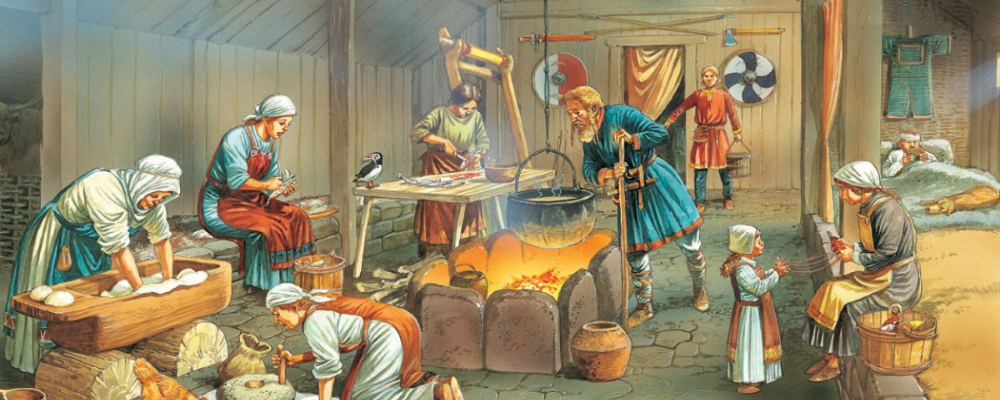
Rhythm of Life
The rhythm of life in Viking villages would have been very much dictated by the season. Plants were sown in the spring, and the men went raiding in the summer while the rest of the household worked to prepare enough food to see them through the winter months. The dark winter months would have been spent clustered together in the longhouses, telling stories, teaching children, making crafts, and more.
This is why the festivals that marked the changing of the seasons were so important in the Viking calendar, as they marked real transitions in day-t-day life.
What do you think? Would you have liked to live in a Viking village?
 Mjolnir pendants in the VKNG Collection – most common symbol worn by the Vikings
Mjolnir pendants in the VKNG Collection – most common symbol worn by the Vikings
The post What did Viking Villages look like? appeared first on Norse and Viking Mythology.
Viking Dreads: A Unique and Bold Hairstyle that Embodies Strength and Honor
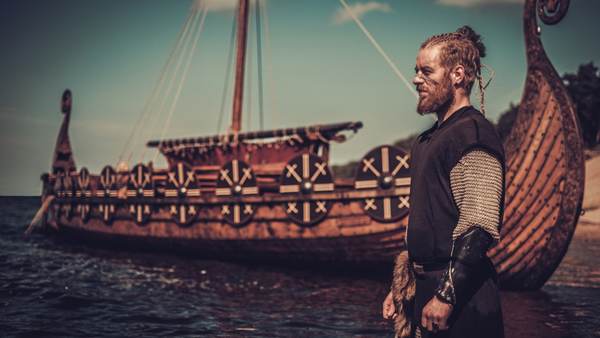
Introduction
When we think of the Vikings, we often picture them as fierce warriors with braided hair, adorned with intricate beads and jewelry. While braids were certainly a common hairstyle among Vikings, a lesser-known but equally impressive style was the Viking dreads. This unique and bold hairstyle not only embodied strength and honor but also had significant cultural and religious significance for the Vikings. In this article, we will explore the history, meaning, and modern-day interpretation of Viking dreads.
Origins of Viking Dreads
Dreadlocks have been worn by various cultures throughout history, including ancient Greece and Egypt. However, the Viking dreads, also known as dread-braids or dread-plaits, were a unique style that emerged during the Viking Age (800-1066 AD). The Vikings, known for their exploration and conquests, traveled extensively and interacted with different cultures. They were particularly influenced by the Rastafarian culture of Africa, which is believed to have inspired the Viking dreads.
Cultural Significance of Viking Dreads
For the Vikings, hair was not just a fashion statement but had cultural and religious significance. It was believed that hair was a symbol of one’s strength and honor, and cutting it off was considered a sign of weakness or defeat. This belief was so strong that Viking warriors would often cut their hair before battle to prevent their enemies from gaining power by cutting it off. The Vikings also believed that hair was a conduit for spiritual energy, and by wearing their hair in a particular style, they could connect with their gods and ancestors.
How to Create Viking Dreads
Creating Viking dreads is not an easy task, and it requires patience and dedication. The process involves allowing the hair to knot and tangle naturally, without using any chemicals or products. The hair is left to grow for several months, and as it grows, it becomes more matted and tangled. The hair is then separated into sections, and each section is twisted and braided to create the dreadlocks. Once the dreadlocks are formed, they are left to mature for several months before they can be adorned with beads, rings, and other decorations.
Modern Interpretation of Viking Dreads
In recent years, Viking dreads have gained popularity as a unique and bold hairstyle that embodies strength and individuality. Many people, including celebrities, have embraced this style, and it has become a symbol of rebellion and counterculture. However, it is essential to acknowledge the cultural and religious significance of Viking dreads and respect their origins. While it is acceptable to wear Viking dreads as a fashion statement, it is important to understand and appreciate the historical and cultural context of this hairstyle.
The Impact of Viking Dreads on Popular Culture
Viking dreads have made an appearance in various forms of popular culture, including movies, television shows, and video games. They are often depicted as a symbol of strength and honor, and characters who wear Viking dreads are portrayed as fierce warriors or rebels. However, it is important to note that the portrayal of Viking dreads in popular culture is often inaccurate and lacks cultural sensitivity.
The Future of Viking Dreads
Viking dreads have a rich history and cultural significance that should be preserved and celebrated. As this hairstyle gains popularity, it is essential to respect its origins and understand its cultural and religious significance. The future of Viking dreads lies in our ability to appreciate and embrace its uniqueness while honoring its history and cultural roots.
Conclusion
Viking dreads are a unique and bold hairstyle that embodies strength, honor, and individuality. This hairstyle has a rich cultural and religious significance for the Vikings and should be respected and appreciated for its historical context. As this hairstyle gains popularity in modern times, it is important to remember its origins and cultural significance. By embracing Viking dreads, we can celebrate the diversity and richness of human history and culture.
FAQs
-
What is the difference between Viking dreads and traditional dreadlocks? While traditional dreadlocks are often created using hair products and a specific twisting technique, Viking dreads rely on natural knotting and tangling of the hair. Additionally, Viking dreads may be adorned with cultural and religious symbols, such as beads and rings.
-
Can anyone wear Viking dreads? Yes, anyone can wear Viking dreads. However, it is important to understand and respect the cultural and religious significance of this hairstyle.
-
How long does it take to create Viking dreads? The process of creating Viking dreads can take several months, as it involves allowing the hair to knot and tangle naturally before twisting and braiding the hair.
-
What kind of cultural and religious significance do Viking dreads have? For the Vikings, hair was a symbol of one’s strength and honor and was believed to be a conduit for spiritual energy. By wearing their hair in a particular style, such as Viking dreads, they could connect with their gods and ancestors.
-
How can I style my Viking dreads? Viking dreads can be styled in various ways, including adding beads, rings, and other decorations. They can also be worn up or down, depending on personal preference. However, it is important to respect the cultural and religious significance of this hairstyle and avoid appropriating it.
Exploring The History Of Viking Rings: From Medieval Treasures To Modern Inspiration

From King Solomon’s magical ring to the Elizabeth Taylor diamond, throughout the ages rings have long represented great societal shifts and major historical events, but when it comes to the rings of medieval civilisations, the true history of some of the world’s most beautiful jewelry can be obscured. For instance, the Vikings were the wearers of some of history’s most exceptional rings, with intricate designs carved into metals that withstood war, weather and woe. When we walk in the footsteps of the Vikings, we discover an elaborate history, with stories that can be told through rings alone.
In this article, not only will we be discussing what made Viking rings so unique, but we’ll also be tracing their history from the medieval world right up to today, where these delicate pieces decorate the hands of hundreds of Nordic history enthusiasts.
Journey Into A Medieval World
To truly understand the significance of Viking rings, and the role they played in Norse culture, we must first go back in time to a Medieval world – one that was ruled by powerful, seafaring Norsemen whose heroes included Ragnar Lothbrok and Cnut the Great. Known for their fierce and effective military tactics, which allowed them to dominate both in battle and while raiding, the Vikings introduced new battle tactics, the likes of which had never been seen before.
From shield walls, in which warriors would interlock their shields to create a wall of defense, to a feigned retreat in which they would lure and entrap enemies before turning to pounce, the Vikings sure knew how to hold their own in battle. However, their tribal success and bold lifestyle are reflected not just in their victory triumphs, but also in the artistic culture that was fostered during this period. One of the key factors? Jewelry.
The Vikings were skilled craftsmen who created beautiful and intricate jewelry pieces from precious metals, most notably the Viking arm ring.
The Viking Arm Ring
Typically made from silver and decorated with intricate designs, the Viking arm ring is one of the most recognisable pieces from the Medieval period. Arm rings were not just a piece of jewelry; they held great significance and represented much more than personal style – in the Viking Age, they were also a form of currency that could be used for trade, especially between the Vikings and the Sami people of northern Scandinavia.
These arm rings were also a way to show one’s allegiance or dedication to a particular leader or clan, which was vitally important in a society where loyalty was highly valued, and alliances could make or break one’s position.
Viking Finger Rings
While the arm ring was a large piece that made a bold statement, the Vikings also used finger rings to tell their story and highlight their symbolic beliefs. These rings were often believed to have protective qualities, and others were worn as a symbol of a particular god or goddess. For example, rings featuring the image of Thor’s hammer were believed to bring protection and good luck to those who were devoted to him.
These rings were typically made of bronze or silver and were often decorated with simple designs, such as knotwork or animal motifs. Viking finger rings were often worn by both men and women, and were sometimes used as wedding rings.
Viking Ring Making Techniques
Interested in how the Vikings crafted their rings? Here are three of the most popular methods:
Filigree
To craft their jewelry, the Vikings blended methods new and old, taking inspiration from as early as the time of ancient Mesopotamia! Filigree, a technique that involves the twisting or braiding of thin wires of gold or silver into intricate patterns to be soldered onto the surface of a ring, was one of the most popular Nordic styles, and can still be seen on modern adaptations today.
Granulation
Granulation is another technique that was used regularly in the making of Viking jewelry. This involves creating small, granular beads of metal and fusing them onto a surface, before arranging the beads in specific patterns to create beautiful designs that can be adapted based on the needs of a tribe.
Repoussé
Designed to create a raised edge at the front of a ring, repoussé is a technique that the Vikings relied heavily on for some rings, as it allowed for detailed designs to be effortlessly added to the surface of a ring from the reverse side, which in turn offered more space to properly represent a god or tribe.
A Modern Day Spin On Viking Rings
Even in modern times, Viking rings are still popular, both for their historical significance and their unique designs. In fact, the rings worn by Nordic tribes are actually growing in popularity in the modern age – many jewelers create Viking-inspired rings that pay homage to the craftsmanship and symbolism of the original Viking pieces.
One popular design for modern Viking rings is the Valknut symbol, which features three interlocking triangles and is believed to have been a symbol of the god Odin who is often associated with death and the afterlife. Have you spotted the Valknut symbol on any Viking jewelry pieces yet?

How To Style Viking Rings Of Your Own
If you’re interested in styling Viking rings of your own, there are a few things you can do to create a unique and personal look:
Choose the right materials: Viking rings were typically made from materials such as silver, gold, bronze, and iron, so choosing a material that speaks to you and fits your personal style should be your number one priority. Try a sterling silver option if you want a ring that is durable and long-lasting without compromising on style.
Incorporate traditional Viking motifs: Viking art is known for its intricate knotwork, animals, and geometric shapes, so if you want to go for a truly authentic look, consider adding some traditional motifs to your design.
Customize the ring size and shape: Viking rings were often chunky and large, but if this isn’t your style then you don’t need to worry. You can customize the size and shape to fit your personal preferences, perhaps by opting for a thinner ring band or a different shape. You can even find serpent shaped rings that are perfect if you’re looking for a piece that’s a little less overwhelming to wear, but still a great conversation starter.
Consider gemstones or other embellishments: While traditional Viking rings didn’t always include gemstones or other embellishments, you can add these elements yourself to create a unique look. Consider adding a small gemstone in a color that complements the metal, or incorporate other materials like leather or wood for a unique take on Viking jewelry that still allows you to feel close to your Viking heritage.
Ultimately, the key to styling your own Viking ring is to draw inspiration from traditional Viking art and materials, while also incorporating your own personal style and preferences. By staying close to the history, and learning more about who the Vikings were and how they used their jewelry, you can become the most confident version of yourself when you wear your new artwork, and channel the Viking within.
Viking History: The mighty Viking spear: From farm to battlefield

5-minute read Introduction The Viking spear is an extremely diverse weapon, utilized for a variety of different functions. Due to this, it is thought
to be the most typical
world. The Viking spear…
Viking History: Conquering with Courage: A Guide to Viking Training and Battle Tactics

Overall, the Vikings’ success in raids and expansion was due in large part to their superior shipbuilding. Their ships were fast, efficient, and flexible. Introduction The axe was used for farm…